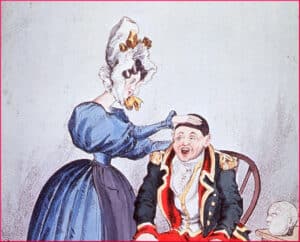
As has been mentioned before in these pages, the venerable Body Mass Index system for keeping track of people’s degree of obesity is not popular in every corner of the obesity field. It takes the patient’s weight and height, and tabulates a result with a mathematical formula.
Childhood Obesity News quoted one expert objecting to the lack of consensus about the BMI, and complaining that studies of obesity-related illnesses…
[…] vary in terms of the BMI cut-off points used to define obesity, as well as the perspective employed from which to measure costs.
Some point to waist measurement as the statistic most pertinent to diabetes and heart disease. Others favor the Edmonton Obesity Staging System, or EOSS. The main objection to BMI testing seems to be that it is unable to distinguish between fat and lean tissue, causing researchers to estimate that as many as a quarter of obese children could be misdiagnosed by BMI. Some experts believe that BMI testing is used inappropriately, and blame it for the under-treatment or over-treatment of many individuals.
Once more, with feeling
Now, the pseudonymous “Your Fat Friend” has published “The Bizarre and Racist History of the BMI,” replete with a ton of reference links. The inventor of the two-centuries-old measurement system, Adolphe Quetelet, was not a doctor, but a sociologist obsessed with l’homme moyen, or the “average man.” He promoted the idea that average is best, a notion that has taken hold in some times and places, but been indignantly rejected in others.
If the term “phrenology” sounds familiar, it is because Quetelet promoted it too, as part of the field of anthropometry, of which he was a founder. Phrenology involves the art of correlating bumps on the skull with traits of character and personality. It was always controversial, and is now regarded as nonsense.
When Quetelet gathered data to develop his index, the “average men” he chose as subjects were French and Scottish. This is what sets off the fireworks where “Your Fat Friend” is concerned. She writes,
That is, the Index was devised exclusively by and for white Western Europeans. By the turn of the next century, l’homme moyen would be used as a measurement of fitness to parent, and as a scientific justification for eugenics — the systemic sterilization of disabled people, autistic people, immigrants, poor people, and people of color.
This alleged science, in other words, was misused to justify a brand of scientific racism. But here comes the disclaimer, from the fair-minded author who specifies that system…
[…] was never intended as a measure of individual body fat, build, or health. For its inventor, the BMI was a way of measuring populations, not individuals — and it was designed for the purposes of statistics, not individual health.
The insurance industry was responsible for turning BMI into an indication of overall health and longevity. The author reports that this is not optimal because the actuarial tables that the bean-counters came up with were…
[…] deeply flawed, representing only those with the resources and legal ability to purchase life insurance. Weight and height were largely self-reported, and often inaccurately. And what constituted an insurable weight varied from one company to the next, as did their methods of determining weight.
The various corporations added or ignored such variables as age and frame size, and discontent with the system grew. Researcher Ancel Keys tried for improvement, but not everyone vouches for his infallibility, either, and “Your Fat Friend” explains in detail what the problems were. The whole subject is worth sober consideration from any health professional. According to its critics, the science of fat measurement just might wind up on the shelf with the science of phrenology.
Your responses and feedback are welcome!
Source: “The Bizarre and Racist History of the BMI,” Medium.com, 10/15/19
Photo credit: National Library of Medicine — History of Medicine on Visualhunt/No known copyright restrictions

 FAQs and Media Requests:
FAQs and Media Requests: 











